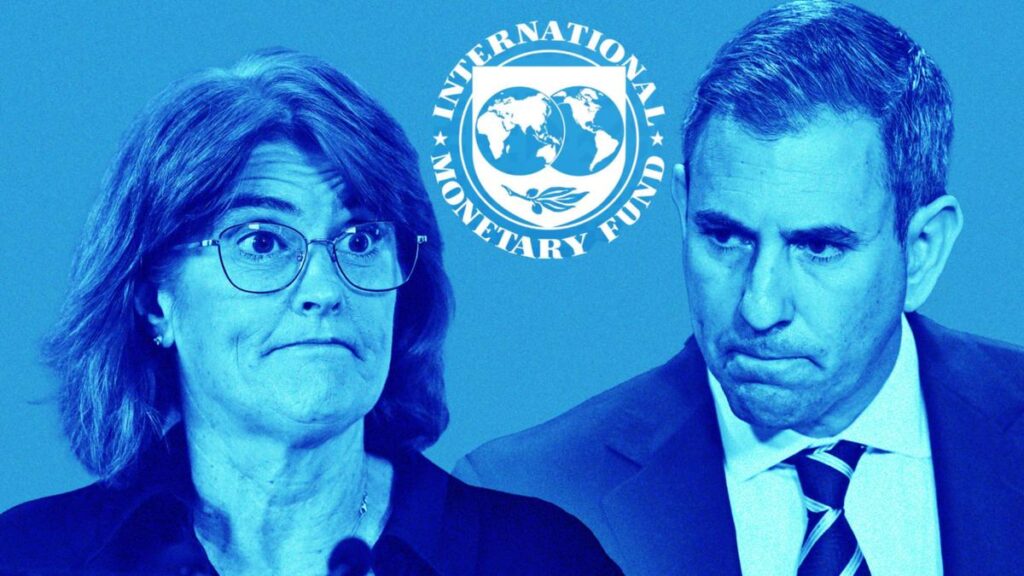Australia will have close to the highest inflation in the developed world next year even as the global economy teeters on the brink amid a trade storm and surging public debt, the International Monetary Fund predicts.
The IMF forecasts “a significant slowdown in global growth” through 2025 thanks to the chaos unleashed by US President Donald Trump’s tariff rollercoaster.
The pain will be close to home for Mr Trump, with growth expectations this year in the United States slashed by a third to 1.8 per cent.
It’s the fund’s first full analysis of the world’s outlook after his government dialled up the trade fight on April 2.
Australia’s economy is set for a slow recovery, with growth to be a modest 1.6 per cent this year and 2.1 per cent next year.
But inflation is set to bounce back to 3.5 per cent in 2026. That would be the second-highest rate among developed nations, according to the IMF’s forecasts.
That’s higher than what was thought at the time of the March Federal Budget, which anticipated 3 per cent inflation in the coming financial year as power rebates and other subsidies wind down.
It means the Reserve Bank will be caught between keeping interest rates elevated to fight rising prices or cutting to support activity and jobs through uncertain times.
Treasurer Jim Chalmers said trade tensions were “weighing heavily on the global outlook and putting upward pressure on inflation around the world”.
Mr Chalmers said uncertainty was “extreme”.
“We’re not immune from the turmoil in the global economy but the progress we’ve made together puts us in good stead,” he said.
“Under the Albanese Government, inflation is down substantially, real wages are up, unemployment is low, growth is rebounding solidly and interest rates have started to come down.”
Data from the Australian Bureau of Statistics released on Tuesday will also add pressure on the Government, as it showed tax revenue as a share of the national economy had hit 30 per cent. That’s the highest level since 2008 and includes taxes across federal, state and local levels.
Yet Australia is clearly not the only country facing taxing times.
The IMF’s report warned that Mr Trump’s trade taxes announce on 2 April — which have since been watered down — would bring “effective tariff rates to levels not seen in a century”.
“This on its own is a major negative shock to growth,” the report said.
“The unpredictability with which these measures have been unfolding also has a negative impact on economic activity.”
Further ringing alarm bells for the Washington-based Fund’s economists are the high levels of borrowing by governments across the world.
Markets got a taste of the carnage in recent weeks when prices of US Government debt tanked, driving yields up. That reportedly sparked alarm in the White House about the potential flow-on interest rate hit for American borrowers and mortgages.
The IMF said “further turbulence” was possible in the financial markets where countries borrow to fund their budgets, especially for nations with high public debts.
Advanced countries were likely to want to keep borrowing cash despite investor concerns about unsustainable debts.
Adding to the headwinds were high valuations in share markets and corporate debts.
Also on Tuesday, the Commonwealth Bank has predicted the quarterly tracker of underlying inflation will fall back into the target band for the first time since 2021 when data is released next week.
Core inflation would be 2.8 per cent through the year to March, the bank reckons. That would be slightly below the Reserve Bank’s forecast.
“We think a 25 basis point rate cut in May is still more likely than not if (core inflation) prints in line with the RBA’s forecast,” Commonwealth senior economist Stephen Wu said.
“If (core inflation) is in line with our forecast, or below, then we consider a rate cut in May is a done deal.”



